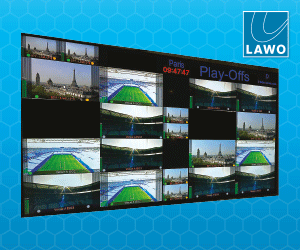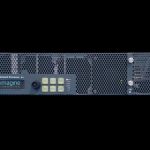MENA broadcasters are increasingly recognising the importance of integrating IP technologies.
In the global broadcasting market, the transition from SDI to IP varies based on several factors. While North America and Europe have experienced a rapid shift, other regions like the Middle East have different dynamics, including varying levels of infrastructure development and regulatory frameworks, as well as diverse investment attitudes among state-controlled entities and private players.
Despite the hurdles, MENA broadcasters are recognising the importance of integrating IP technologies into the mainstream of the TV business. They appreciate the scalability and flexibility that IP solutions offer in navigating the evolving media landscape. Like any technology transformation, widespread adoption relies on knowledge enrichment. Manufacturers in the broadcast industry play a pivotal role in advocating for the benefits of IP and assisting customers in understanding the technology for a smooth and cost-effective transition at their own pace.
A valuable approach to enhancing the knowledge of IP among MENA broadcasters involves organising collaborative training workshops, seminars and webinars. These aim to simplify the intricacies of IP technology, empowering broadcasters to feel at ease and proficient in its application. Additionally, they provide a forum for broadcasters to delve into their operational obstacles and discern how IP technology can offer effective solutions. They also serve as a dialogue, providing manufacturers with valuable insights into the unique needs of the industry. This enables vendors to refine their product roadmaps.
A critical aspect of these educational sessions is emphasising the importance of systems integration through open standards like SMPTE ST 2110 and IPMX. These are vital for ensuring interoperability and flexibility in IP broadcasting systems. By showcasing collaborative efforts among vendors through organisations like SMPTE, the Alliance for IP Media Solutions (AIMS) and the Video Services Forum (VSF), we can reassure broadcasters about the reliability of the technology and highlight its broad industry support.
Through the ongoing engagement and support of MENA broadcasters, we observe growing adoption of IP technology. Over time, broadcasters are increasingly confident in the technology and recognise its benefits in terms of flexibility, scalability, cost-efficiency and improved quality of service through practical applications. Through our collective efforts with other manufacturers, we anticipate broader acceptance of IP technology within the broadcasting industry.
Along with the momentum of IP adoption, we are also seeing the increasing role of artificial intelligence (AI) in revolutionising the industry. AI’s potential to enhance content personalisation, optimise operations and drive predictive analytics is becoming increasingly recognised. Media broadcasters are not just adopting but are also keen to explore the depths of AI technologies, signalling an era of unprecedented innovation and customisation in content delivery and management. This eagerness to embrace emerging technologies underscores a transformative phase in the media landscape, marked by agility, innovation and a forward-thinking approach.
In short, we have witnessed the transformation within the Middle East broadcast industry over the last five years. This period has been characterised by a marked departure from conventional broadcasting approaches towards more efficient, scalable and cost-effective models. The surge in adoption rates of hybrid, IP, cloud and AI technologies across the region not only indicates a robust move towards digital transformation, but also positions the Middle East as a regional leader in the integration of futuristic technologies in media and broadcasting.

















































































